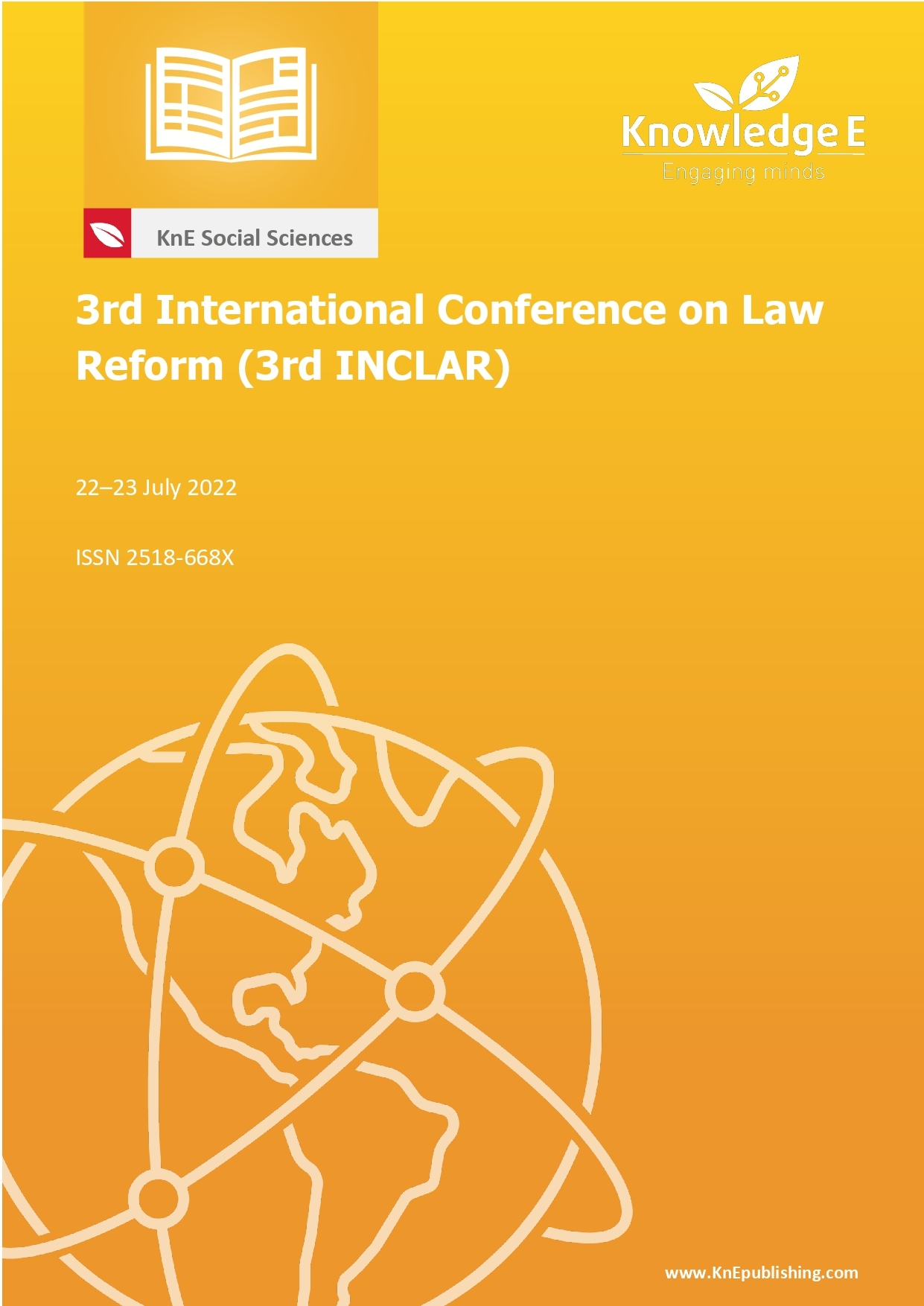Legal Protection of Patients in Telemedicine Services: Implementation and Challenges
DOI:
https://doi.org/10.18502/kss.v7i15.12099Abstract
The increasingly widespread Covid-19 pandemic has an impact on the disruption of health services in hospitals, including patients who intend to consult or treat other diseases as most of the hospitals are used to treat Covid-19 patients. This situation encourages a group of health service providers to use telemedicine as an alternative for the community to continue receiving health services from medical personnel without having to go to the hospital. This study focuses more on the information services and medical consultations offered by service providers, hence it is necessary to know how the legal protection of patients in telemedicine services is being implemented and their challenges. This paper is a prescriptive normative research using secondary data in the form of regulations and policies as well as interviews with several sources in related fields. Regulations and policies by the government are still temporary (fluctuating) and have not comprehensively regulated transactions for telemedicine services, for example, when an incident occurs that results in patient loss, a strong legal basis is needed to restore patient rights so that in the end a legal certainty is created for the society.
Keywords: legal protection, patients, telemedicine
References
[2] Anonimous, “LaporCovid-19 | Failures in Saving Lives and Protecting Citizen’s Personal Data,” laporcovid19.org, 2020. [Online]. Available: https://laporcovid19.org/post/failures-in-saving-lives-and-protecting-citizenspersonal- data. [Accessed: 05-Sep-2022].
[3] I. N. Bagiastra and N. L. D. Yuliana, “Legal Protection for Patients Who Suffer Loss Due to Misdiagnosis in Online Health Service Platforms,” JurnalKertha Wicara, vol. 10, no. 8, 2021.
[4] D. M. Listianingrum and et. al, “Legal Protection of Consumers in Online Application- Based Health Services,” Diponegoro Law J., vol. 8, no. 3, 2019.
[5] W. Andrianto and A. R. Fajrina, “Comparative Review of Telemedicine Implementation between Indonesia and the United States,” J. Huk. Kesehat., vol. 01, no. 02, pp. 70– 85, 2021.
[6] M. I. Sabrina and I. R. Defi, “Telemedicine Guidelines in South East Asia-A Scoping Review,” Front. Neurol., 2021.
[7] S. Soekanto and S. Mamuji, Normative Legal Research. Jakarta: PT Grafindo Media Pratama, 2010.
[8] S. Soekanto, Introduction to Legal Research. Jakarta: UI Press, 1986.
[9] S. Irianto and Shidarta, Legal Research Methods: Constellation and Reflection. Jakarta: Yayasan Pustaka Obor Indonesia, 2011.
[10] World Health Organization, “Implementing Telemedicine Services During Covid-19: Guiding Principles and Consederations for a Stepwise Approach.”
[11] S. Ryu, “Telemedicine: Opportunities and Developments in Member States: Report on the Second Global Survey on eHealth 2009,” Glob. Obs. eHealth Ser., vol. 2.
[12] Fithriyyah and F. D. Fitri, “Telemedicine for The Rural Areas in ASEAN: Challenges and Opportunities.”
[13] Rokom, “Lindungi Pasien dengan Regulatory Sandbox ala Singapura.”
[14] J. Aw and A. C. W. Ray, “Telemedicine (Part 1).”
[15] M. L. Adnan and M. D. Pramaningtyas, “The Use of Telemedicine During the Covid-19 Pandemic: Prospects and Challenges.”
[16] O. S, “Telemedicine During The COVID-19 in Italy: A Missed Opportunity?,” Telemed e-Health, pp. 19–20, 2020.
[17] S. Sumarsono, “Telemedicine Implementation in Indonesia-Opportunities and Challenges,” 2020.

